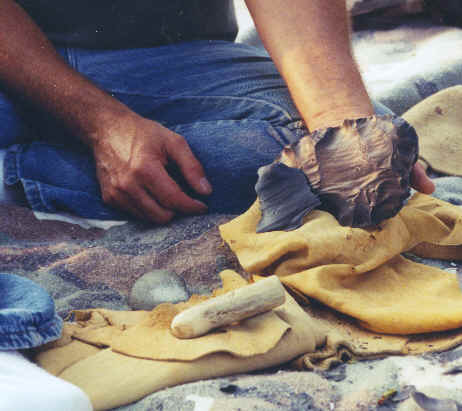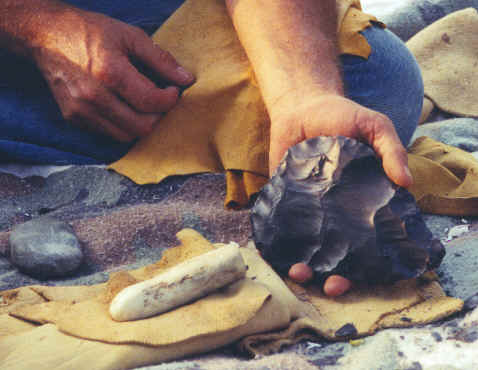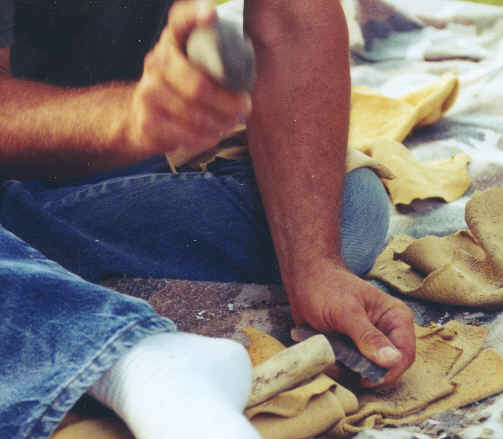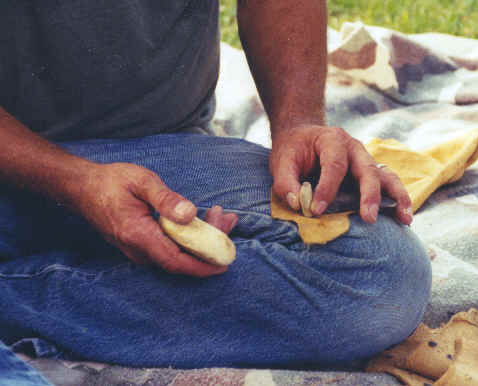|
|
|
Mike says that it would seem logical to assume that a primitive nomadic society like Clovis would not sit up high like modern flintknappers do today in chairs to flint-knap. People who lived and hunted on treeless plains would probably have sat on the ground. This is another reason that the rocker-punch flaking method might arguably be a candidate for early tool making. Large core blades and large biface cores as well as any other stone tool types can be made by sitting flat on the ground and using rocker-punch flaking. |
|
|
|
|
Primitive cultures who have been observed making stone tools often times are not sitting up high. Aborigines in Australia sit flat on the ground to flint-knap. New Guinea tribesmen squat on their heels to percussion flake their adzes prior to grinding. |
|
|
|
|
Mike says that some of the artifacts being excavated on Stone Age sites may be misidentified. At least one or more archaeologists have told him that a few ancient artifacts they have seen remind them of a similar wear pattern as some of the artifacts he is producing. Punches, as a tool type, may not be getting the recognition they deserve. |
|
|
|
|
Mike says that you don't find large billets (hammers) on archaeological sites like the large moose antler and copper billets flintknappers are using today. Most of the suspected flintknapping tools found on prehistoric sites were made of white tail deer antler and are fairly small. The fact that ancient tools seem to be smaller than the ones used by modern flintknappers might be an other argument for rocker-punch flaking. |
|
|
|
|
Mike Dothager says that the rocker-punch style of flaking should deserve some investigation. Archaeologists will need to experiment with it and comment on its merits. Field archaeologists might also look for artifacts that would fit the description of a punch. Many different fracturing techniques have been used to shape stone. Maybe rocker-punch flaking was one of the first. |
|
|
"REFERENCES"
1973,
"Archaeology by Experiment, by John Coles, p.15. |
|




